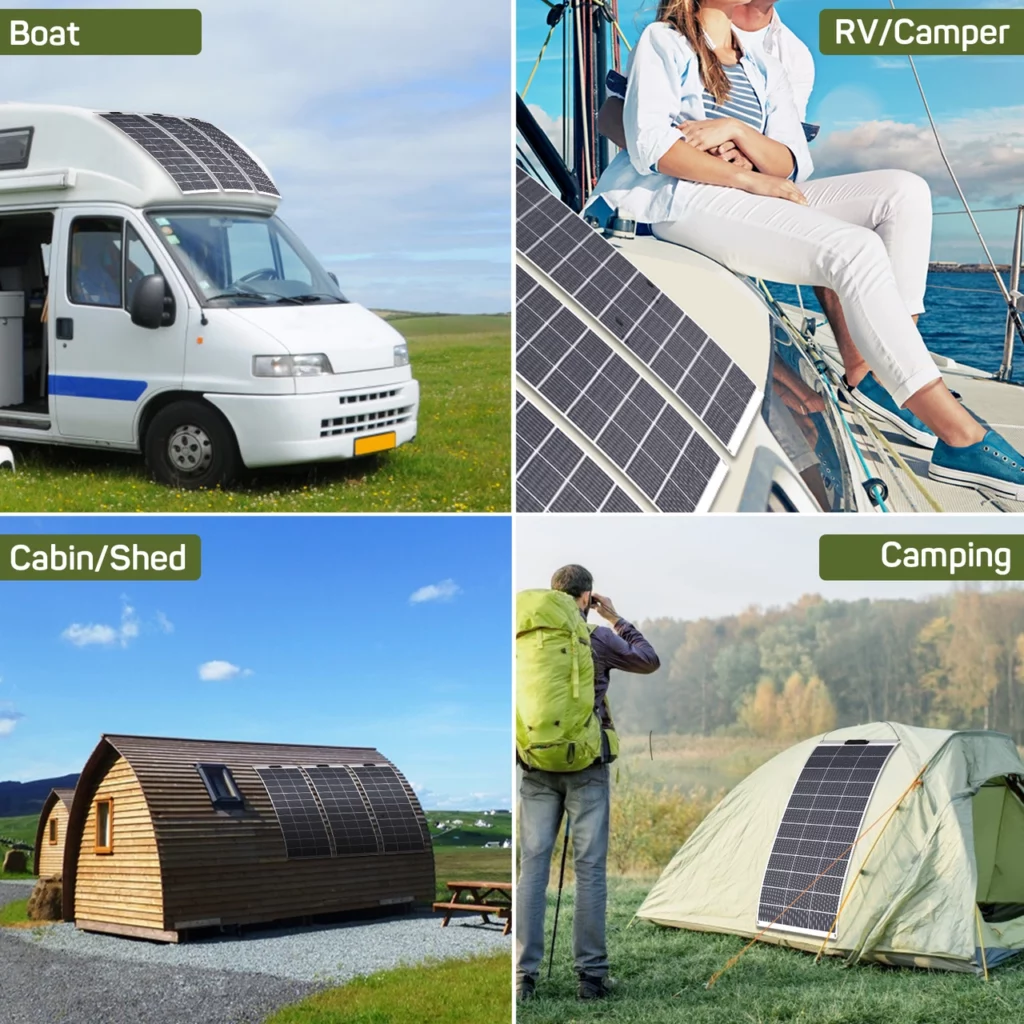The solar panels you see on rooftops normally have rigid photovoltaic cells and frames, which means they need flat surfaces. Solar panels are also larger and heavier than they may appear when seen from the ground.

source: HQ Solar Power
Their exact dimensions vary by brand and model, but most residential panels are close to 65” x 40”, while having a thickness of around 1.5”. They are also quite heavy, ranging from 40 to 50 pounds. However, flexible solar panels are a viable option in cases where the size and weight of traditional PV modules limit their use.
Flexible solar panels are less standardized than their rigid counterparts, which means you can find a much wider range of sizes, wattages, and prices. Unfortunately, this also means low quality products are very common, and you must be careful when comparing your options.
As a bare minimum, you should look for flexible solar panels with certification marks like UL and ETL to ensure safety. Electrical products that have not been properly tested are more likely to suffer faults or start a fire.